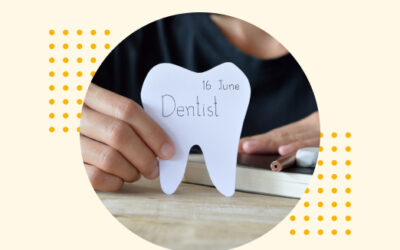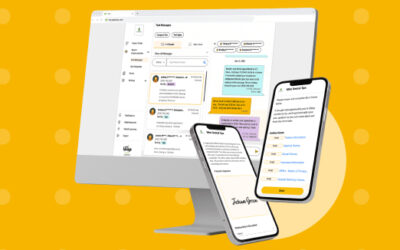
Let’s face it, most people don’t like to go to the dentist. Research from the CDC shows that even before the pandemic, more than one-third of adults hadn’t visited the dentist in the past year. Such a large pool of inactive patients also represents missed production opportunities for dentists. In fact, hygiene and recall appointments can represent 40 to 85% of clinical production. So how can dentists get patients to get back in the chair?
One of the best ways to engage with inactive patients—and encourage appointment booking—is by sending dental recall emails. When done well, targeted dental recall messages help you stay in touch with patients, showing them you care about their health and wellbeing rather than “scolding” them for missing an appointment. To get you started, we’ve put together some top tips to help you develop your own dental recall email templates.
Keep your dental recall messages short and focused.
Beware of the long email – patients will overlook it. The average working professional already receives 121 emails per day. A good strategy is to focus on one concern or main point per email and to try and limit your word count in the body copy to around 125 words.
Address actual patient concerns in your recall emails.
Your dental recall message should be personal and personable, directly addressing the reason(s) why a patient might be skipping their appointment. For example, if their dental insurance expired, you could offer flexible payment plan options. Maybe they don’t have time to come in during the week, so remind them that you’re open past 5 pm or on the weekends. Whatever their concern or challenge, show them how you can help solve it.
Craft Effective Dental Recall Emails with Our Free Templates!
-
Learn our proven best practices for creating effective dental recall emails
-
Save time by using our pre-written templates for past-due patients
-
Increase patient engagement and retention, and ultimately grow your practice
Create an email schedule.
Space your emails out over several months so your patients don’t feel bombarded. As an example, you might choose to reach out at 3 months past due, at 6 months past due, and again at 9 months past due. Continue to send reactivation emails every three to six months, even if it’s been a year or more since a patient’s last visit. Patients will seek dental care at some point and this approach will help ensure they call you first!
Promote offers.
If you have any promotional offers going on, share the special news via email with your inactive patient list. You might even consider creating a promotion specifically for overdue patients, such as offering a free take-home whitening kit or a new electric toothbrush. Make the offers available for a limited time, encouraging them to take immediate action.

Give clear direction.
Tell patients exactly what you want them to do in the email and how they can do it. If you want them to schedule an appointment, tell them to call, email, or text you to schedule now and provide the corresponding email address or phone number. Make sure whatever contact information you provide is mobile-friendly so that patients can tap on your phone number and instantly call you or open a text message.
FYI: If you use YAPI Smart Scheduling, you can send an automated recall scheduling reminder via text to any past due patient in conjunction with your dental recall emails. They’ll be able to conveniently and quickly book their next appointment with YAPI Smart Scheduling, it’s hassle-free and a trusted strategy to get those patients back on the books!
Above all else, make it easy for patients to book an appointment by eliminating as many barriers as possible. Patients are already making excuses not to come to the dentist, so don’t give them any more reasons not to!


